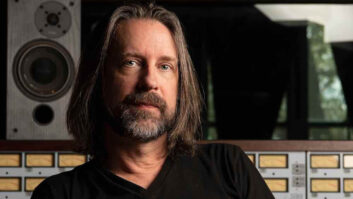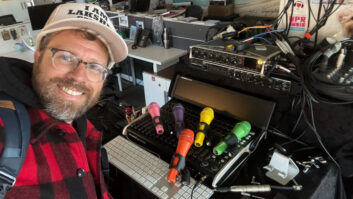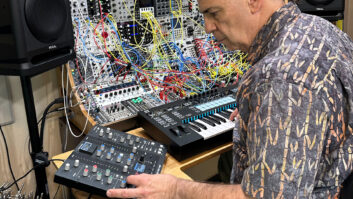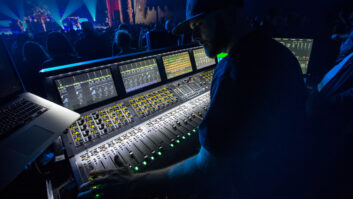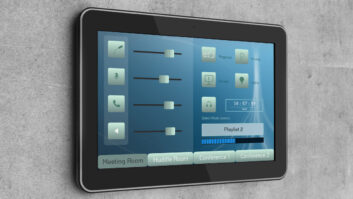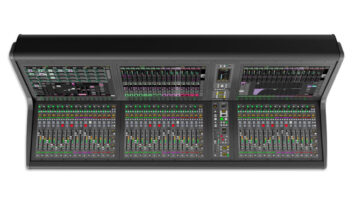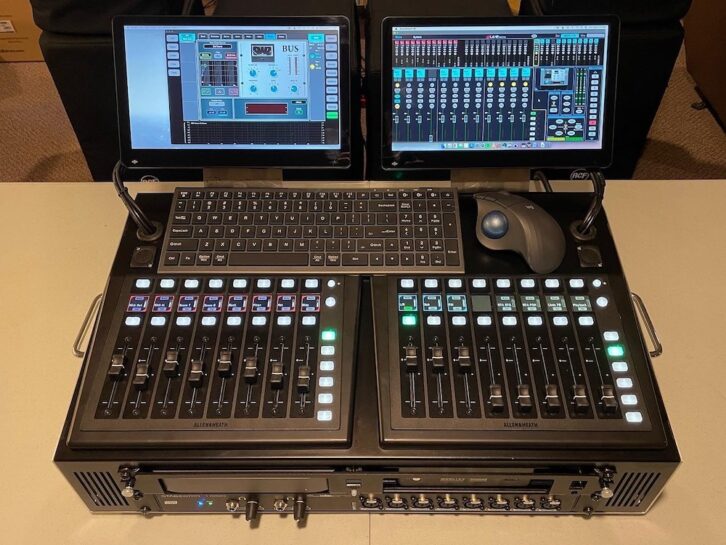
Middlebury, CT (September 21, 2023)—As a freelance live sound engineer, touring with the likes of Boston pop-funk band Couch and others, Chris DiCorpo has worked with a variety of desks over the years, but in recent times, decided to create his own ultra-compact console based around Allen & Heath’s dLive platform—without using a full-fledged dLive control surface.
“I had a CDM32 MixRack and an IP-8 controller for a while,” he explained. “I was mixing with just the IP-8 for faders, and a laptop running dLive Director to make deeper configuration changes.” The compact rig still had considerable processing power since all 128 channels and 64 busses of 96kHz FPGA processing are handled in the MixRack, but DiCorpo started to brainstorm a new setup that would incorporate a second IP-8 controller for more faders, as well as a Waves DSPRO 1000 he owned to handle audio monitoring.
“The plan was to use the Waves card in my CDM32 MixRack to send audio to front of house,” he said. “I also use a Waves server for some PA processing, but the DEEP plugins in the dLive mean that I generally don’t need to insert Waves on any of my channel strips.”
DiCorpo chose a Mac Mini for his new front-of-house rig, which runs dLive Director, manages the Waves SoundGrid network, and allows multitrack recording and virtual soundcheck with his DAW. “I just started building from there,” he recalled. “I found a company in Canada that allows you to easily design and order one-off custom aluminum enclosures, so I added the connectors I needed, vents and cooling fans, and two spaces at the top where my IP-8 controllers would sit.”
The two IP-8 controllers are powered using a PoE switch, which also acts as a network interface with the dLive MixRack, computer and Waves server. A wireless router is also connected to the MixRack, which sits at the stage for performers to control their monitor mixes using mobile devices.
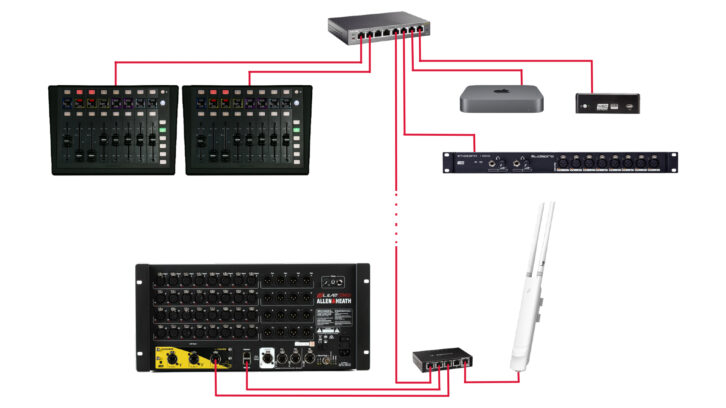
For screens, DiCorpo mounted two 12″ touchscreen monitors on arms that can be removed when the rig is transported. “When I want to disassemble, I just remove the threaded thumb screws and I can lay the monitors on top of the IP-8s,” he explained. “When everything is folded up inside the Pelican case, it weighs about 56 pounds.”
DiCorpo uses scene changes to alter the functions of the buttons. “The channel buttons default to PAFL and Mute,” he explained. “I reconfigured the buttons in two scenes. In one, they are Select and Mute, in the other, they are PAFL and Mix Select. Those two scenes are filtered so they don’t impact any of the other settings on the console, and I can easily flip back and forth with a single button.”
A common question DiCorpo hears when it comes to the IP-8 is how to achieve “sends on faders” for monitor mixes. “Many people assume it’s not possible, but it is,” he confirmed. “You can create a scene for each monitor mix, and assign the faders as Aux sends, rather than Main bus faders. In my layer containing the Aux masters, the eight buttons across the top select my monitor mix scenes.”
DiCorpo affectionately refers to his custom rig as the “CJD Al2000,” combining his initials, the chemical symbol for Aluminum, and “2000” – to maintain consistency with the official Allen & Heath dLive product naming scheme.
“Engineers who are familiar with dLive see the IP-8 controllers and can figure out what I’m mixing on,” said DiCorpo, “but still a lot of people ask questions about it and give compliments. It’s a great conversation piece.”
